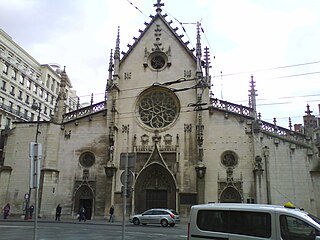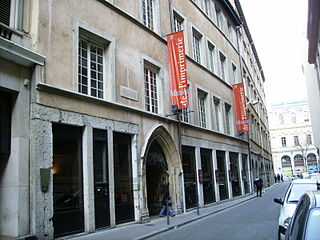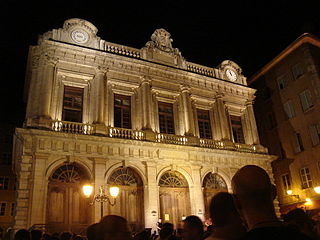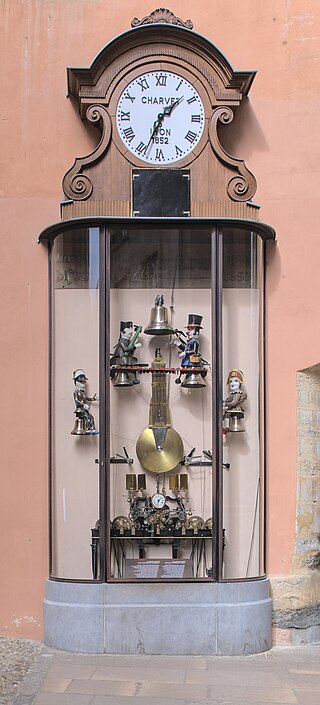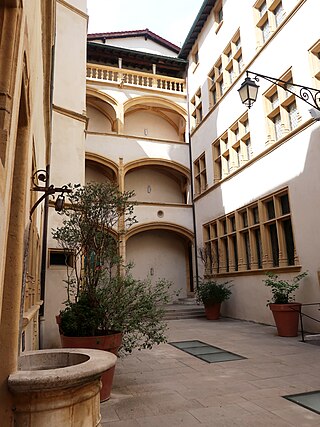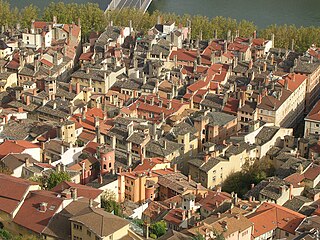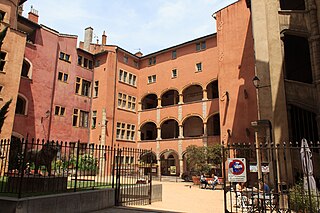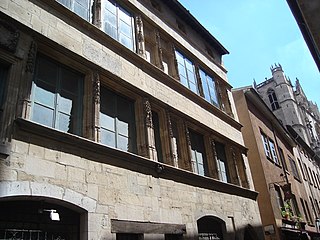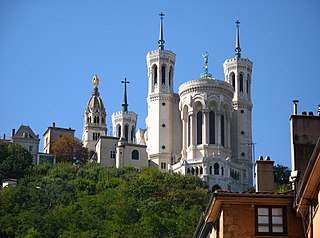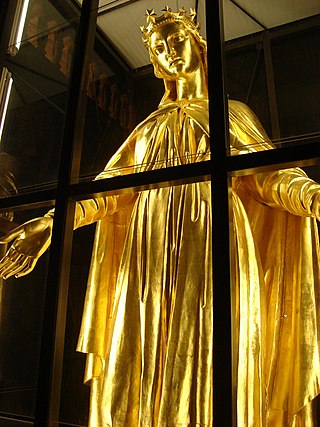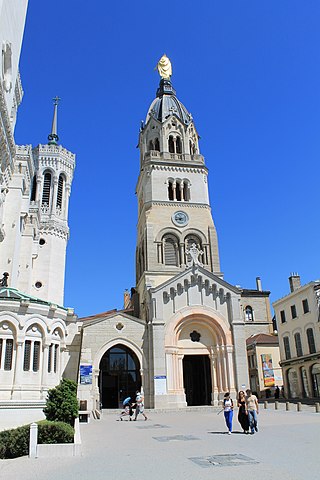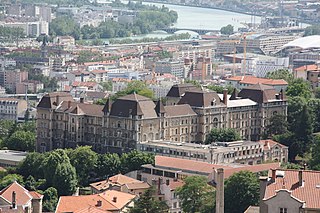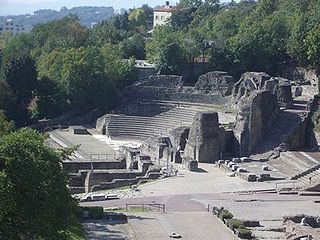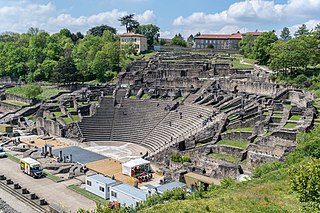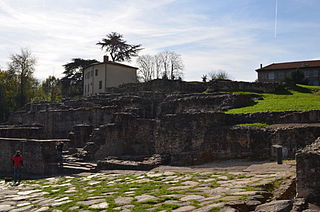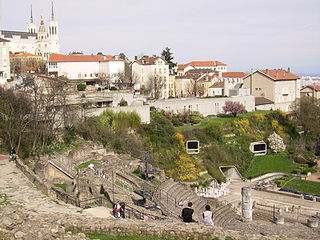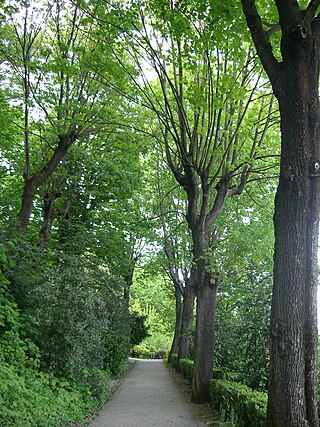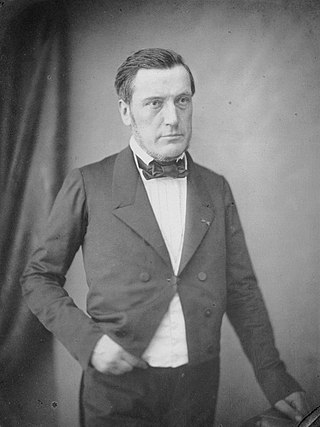Self-guided Sightseeing Tour #2 in Lyon, France
Legend
Guided Free Walking Tours
Book free guided walking tours in Lyon.
Guided Sightseeing Tours
Book guided sightseeing tours and activities in Lyon.
Tour Facts
5.5 km
204 m
Experience Lyon in France in a whole new way with our free self-guided sightseeing tour. This site not only offers you practical information and insider tips, but also a rich variety of activities and sights you shouldn't miss. Whether you love art and culture, want to explore historical sites or simply want to experience the vibrant atmosphere of a lively city - you'll find everything you need for your personal adventure here.
Activities in LyonIndividual Sights in LyonSight 1: Basilique Saint-Bonaventure
The Église Saint-Bonaventure is one of the churches of the quarter Presqu'île, located on the Place des Cordeliers, in the 2nd arrondissement of Lyon. This is the only medieval building not demolished after the creation of the rue Impériale, under the Second Empire by the prefect Claude-Marius Vaïsse.
Sight 2: Musée de l'Imprimerie et de la communication graphique
The Museum of Printing and Graphic Communication is one of the museums in Lyon whose main missions are to enrich, preserve, document and promote the book and graphic heritage to various audiences. Created in 1964, it is located in the Hôtel de la Couronne, at 13, rue de la Poulaillerie in the 2nd arrondissement of the city.
Wikipedia: Musée de l'imprimerie et de la communication graphique (FR), Website, Website
Sight 3: Église Saint-Nizier
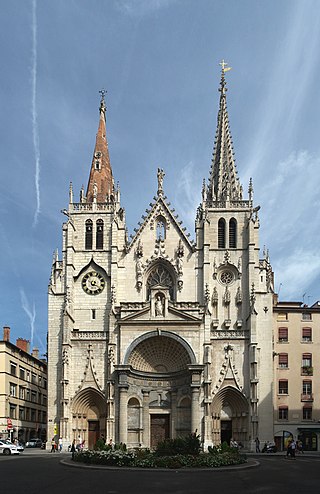
The Church of Saint-Nizier is a church in the Presqu'île district of Lyon, France, in the 2nd arrondissement, between the Place des Terreaux and the Place des Jacobins. Its name refers to Nicetius of Lyon, a bishop of the city during the 6th century. Begun in the 14th century and only completed in the 19th century, the church contains a variety of architectural styles, ranging from the neo-Gothic spire to the classical Renaissance facade. In 1998, it was inscribed on the UNESCO World Heritage List along with other historic buildings in Lyon.
Sight 4: Temple du Change
The Temple du Change or Loge du Change, formerly used for the stock exchange of Lyon, stands in Vieux Lyon. It was originally built after plans by architect Simon Gourdet between 1631 and 1653, then rebuilt under the direction of Jacques-Germain Soufflot in 1748–1750. It has been assigned to Protestant worship since 1803, hence its designation Temple. As part of Vieux Lyon, the building was inscribed on the UNESCO World Heritage List along with other districts in the historic centre of Lyon.
Sight 5: Horloge Charvet
The Charvet clock, also known as the "Guignol clock", is a clock installed since 1864 in Lyon, France.
Sight 6: Musées Gadagne
Gadagne and its two museums form a museum complex in Lyon, France. Located in the 5th arrondissement in the Saint-Jean district, one of the three districts of Old Lyon with Saint-Paul and Saint-Georges, it is located in the Hôtel des Pierrevive, renamed "Hôtel de Gadagne". Gadagne is home to two museums of France, the MHL - Musée d'Histoire de Lyon and the MAM - Musée des arts de la Marionnette, a small theater with a program of puppet theater shows and lectures, a shop, a café-restaurant, and a hanging garden overlooking the city.
Sight 7: La Tour Rose
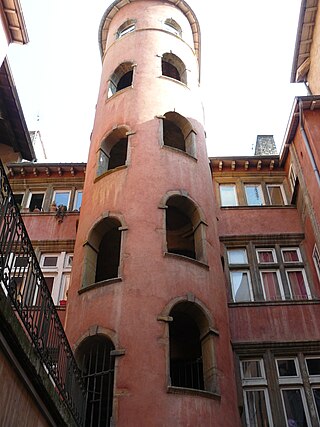
The Maison du Crible, also known as the "pink tower" because of its ochre-colored staircase, is a building located at 16 rue du Bœuf, in the 5th arrondissement of Lyon, France. Located in the heart of Old Lyon (Saint-Jean), it is one of the most remarkable buildings in the district because of its ochre color, the tower that adorns it and gives it its name. The most illustrious of the residents was the King of France Henri IV, who stayed there for a few days in 1600, when he married Marie de Medici, celebrated less than 300 meters from the house, at the primatial church of Saint-Jean. It has been classified as a historical monument since 1937. It is home to the French Orthodox parish. The restaurant La Tour rose, originally on the ground floor of the building and now moved to another address on rue du Bœuf, takes its name from the stair tower.
Sight 8: Vieux Lyon
Get Ticket*Vieux Lyon is the largest Renaissance district of Lyon. In 1964, Vieux-Lyon, the city's oldest district, became the first site in France to be protected under the Malraux law to protect France's cultural sites. Covering an area of 424 hectares between the Fourvière hill and the river Saône, it is one of Europe's most extensive Renaissance neighborhoods. There are three distinct sections: Saint Jean, Saint Paul and Saint Georges. In 1998, Vieux Lyon was inscribed on the UNESCO World Heritage List along with other districts in Lyon because of its historical importance and architecture.
Sight 9: Musée Cinéma & Miniature
The Musée Miniature et Cinéma, formerly the Musée des miniatures et sets de cinéma, is a private museum founded in 2005 by the miniaturist artist Dan Ohlmann. It is located at 60 rue Saint-Jean in Lyon, housed in the listed historic building of the former Maison des avocats. Since December 8, 2021, it has been managed by Julien Dumont.
Sight 10: Maison du Chamarier
The Maison du Chamarier, also known as Hôtel d'Estaing, is a house at 37 rue Saint-Jean in the 5th arrondissement of Lyon, at the corner of Rue de la Bombarde. It was built in 1498 but the ancient ruins are from the thirteenth century. From Latin cameriarus, the word "Chamarier" means the superintendent of the finances of the bishop of the Lyon Cathedral. He also owns the keys to the gates of the enclosure canonical. From the fifteenth century, he gathered the taxes collected during the fairs.
Sight 11: Église Sainte-Croix de Lyon
The Church of Sainte-Croix in Lyon is a Catholic religious building destroyed in the nineteenth century. It is the northernmost church of the Lyon episcopal group, including the Saint-Jean cathedral and the former Saint-Étienne church, and the remains of its foundations can be seen in the adjoining archaeological park.
Sight 12: Basilique de Fourvière
The Basilica of Notre-Dame de Fourvière is a minor basilica in Lyon, France. It was built with private funds between 1872 and 1896 in a dominant position overlooking the city. The site it occupies was once the Roman forum of Trajan, the forum vetus, thus its name.
Wikipedia: Basilica of Notre-Dame de Fourvière (EN), Website
Sight 13: Colline de Fourvière
Fourvière is a city district of Lyon, France, a hill immediately west of the old part of the town, rising from the river Saône. It is the site of the original Roman settlement of Lugdunum in 43 BC. The district contains many religious buildings including convents, monasteries and chapels. It is known in Lyon as "the hill that prays".
Sight 14: Chapelle Saint-Thomas
The chapel of Saint-Thomas de Lyon is the oldest part of the sanctuary of Fourvière. Consecrated first to St. Thomas and then to the Virgin, it was destroyed and rebuilt many times.
Sight 15: Musée d'art religieux de Fourvière
The Musée d'art religieux de Fourvière or simply Musée de Fourvière is a museum of sacred art founded in 1960 in Lyon, France.
Sight 16: Espace culturel du christianisme à Lyon
The Espace Culturel du Christianisme à Lyon (ECCLY), or Musée de l'Antiquaille, is an interpretation center for the history of Christianity located on the hill of Fourvière in Lyon, France, at 49 montée Saint-Barthélemy.
Wikipedia: Espace culturel du christianisme à Lyon (FR), Website
Sight 17: Place des Minimes
The Place des Minimes is a square located in the 5th arrondissement of Lyon, France
Sight 18: Odéon
The Odeon of Lyon is a small ancient Roman theatre near the summit of the Fourvière hill in Lyon, France. It forms a pair with the Ancient Theatre of Fourvière, one of only two such pairs in Gaul. Along with other buildings in Lyon, it was inscribed on the UNESCO World Heritage List in 1998, protecting Lyon's long history as a powerful city and its unique architecture.
Sight 19: Théâtre Gallo-Romain de Fourvière
The Ancient Theatre of Fourvière is a Roman theatre in Lyon, France. It was built on the hill of Fourvière, which is located in the center of the Roman city. The theatre is part of a UNESCO World Heritage Site protecting the historic center of Lyon.
Sight 20: Temple de Cybèle
The basilical insula is the name given by its inventor Amable Audin to a site that hosted several Roman constructions, in the ancient district of Fourvière in Lyon, France. Overlooking the ancient theatre, it was excavated from 1925 onwards by several archaeologists and then largely excavated by Audin between 1965 and 1978. The identification of the ruins discovered has been the subject of various interpretations, both historical and speculative, but its purpose remains unknown. Thus, many names have been conferred on this complex space, including the Augustan basilical insula, the temple of Cybele, the sanctuary of Cybele, Agrippa's praetorium and the governor's palace.
Sight 21: Lugdunum Musée et Théâtres Romains
Lugdunum, formerly known as the Gallo-Roman Museum of Lyon-Fourvière or Museum of Roman Civilisation, is a museum of Gallo-Roman civilisation in Lyon. Previously presented at the Museum of Fine Arts of Lyon and the Antiquarium, the municipal Gallo-Roman collection was transferred to a new building designed by Bernard Zehrfuss and opened in 1975, near the city's Roman theatre and odeon, on a hill known as Fourvière, located in the heart of the Roman city. Internally, it is formed of a concrete spiral ramp descending and branching out into the display rooms. It is managed and operated by the Metropolis of Lyon jointly with the archaeological museum of Saint-Romain-en-Gal. As well as displaying its own permanent collections of Roman, Celtic and pre-Roman material, a plan-relief of the ancient town and scale models of its major monuments such as the theatre and the Odeon, it also regularly hosts temporary exhibitions. On November 8, 2017, the museum was renamed Lugdunum.
Sight 22: Le Jardin de la Visitation
Parc des Hauteurs is an urban park on Fourvière hill in Lyon, France. It encompasses the public spaces between the basilique de Fourvière and Loyasse cemetery.
Sight 23: Amédée Bonnet
Amédée Bonnet (20 March 1809 – 2 December 1858) was a French physician, surgeon at the Hôtel-Dieu de Lyon, and member of the Academy of Medicine. He is one of the forerunners of orthopedic surgery.
Share
Disclaimer Please be aware of your surroundings and do not enter private property. We are not liable for any damages that occur during the tours.
GPX-Download For navigation apps and GPS devices you can download the tour as a GPX file.
